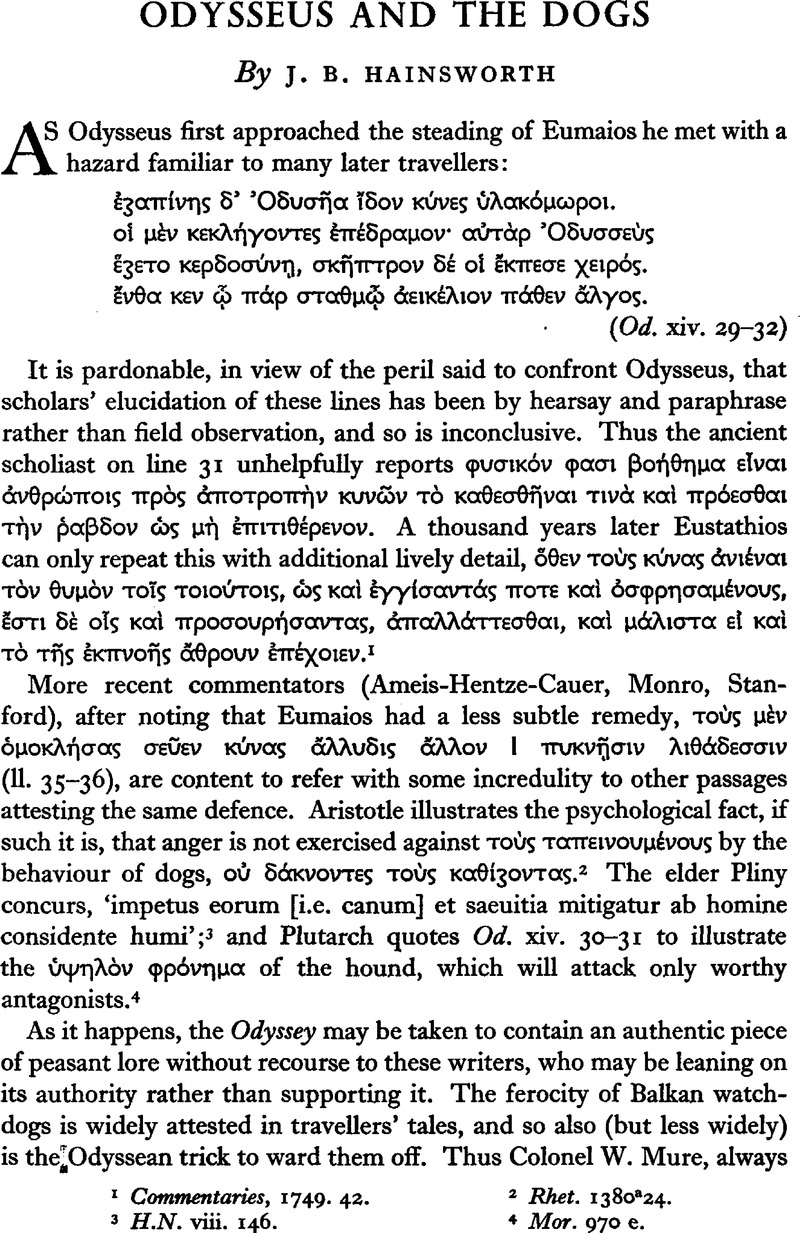No CrossRef data available.
Article contents
Odysseus and the Dogs
Published online by Cambridge University Press: 05 January 2009
Abstract

- Type
- Research Article
- Information
- Copyright
- Copyright © The Classical Association 1961
References
page 122 note 1 Commentaries, 1749. 42.Google Scholar
page 122 note 2 Rhet. 1380a24.
page 122 note 3 H.N. viii. 146.Google Scholar
page 122 note 4 Mor. 970 e.Google Scholar
page 123 note 1 For this and similar gestures see Konrad Lorenz's amusing and fascinating book, King Solomon's Ring, ch. xii, where their biological function is explained.
page 124 note 1 It may be asked whether Greek watchdogs were ever, like the Arctic husky, permitted to cross with wolves. In classical times wolf hybrids are reported from Egypt, Ethiopia, Gaul, Cyprus, Kyrene, and Greece itself by various writers (Arist. Hist. Anim. 607a2, Diod. Sic. iii. 35, Poll. v. 40, Pliny, H.N. viii. 148).Google Scholar
page 124 note 2 The term ἕ![]() ετο may well as a generic word cover crouching or squatting; cf. ὑφι
ετο may well as a generic word cover crouching or squatting; cf. ὑφι![]() ανον, Eur. Phoen. 1382, of men crouching under shields.
ανον, Eur. Phoen. 1382, of men crouching under shields.
page 124 note 3 Notopoulos, J. A., ‘Parataxis in Homer: a new approach to Homeric criticism’, Trans. Amer. Phil. Assoc. lxxx (1959), 1–23Google Scholar, has a useful preliminary study, correcting many of the assumptions that have been so destructive to Homer in the past.
page 124 note 4 Contrast Il. xix. 386–7 with xx. 273.Google Scholar
page 124 note 5 Il. vi. 117.Google Scholar Hektor's shield is a round targe in (for example) Il. xiii. 192.Google Scholar




